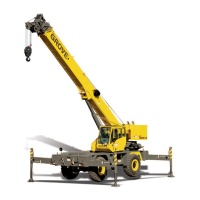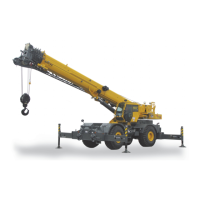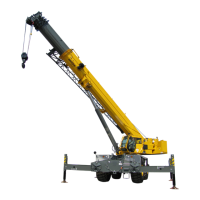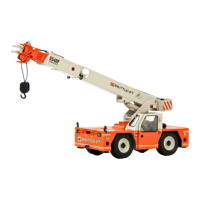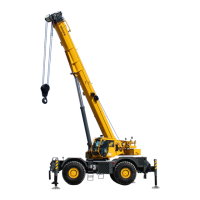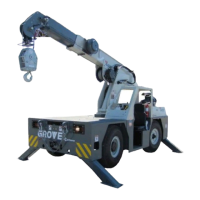Published 4-20-2015, Control # 502-01 2-73
RT540E SERVICE MANUAL HYDRAULIC SYSTEM
8. Install the replacement piston seal and wear rings on the
outside of the piston.
9. Lubricate all parts freely with clean hydraulic oil.
10. Remove the cover from the barrel. Insert the rod and
attached parts into the barrel with a slight twisting
motion.
11. Push the head into the barrel.
12. Pressurize and cycle the cylinder with hydraulic oil
pressure. Test the cylinder at 20,700 kPa (270 bar)
(3000 psi). Check for proper operation and any leakage.
Make repairs as needed.
OUTRIGGER JACK CYLINDER
Description
The four outrigger jack cylinders (Figure 2-39) each have a
hollow rod for internal porting. Each cylinder has a 10.1 cm
(4.0 inch) diameter bore. A port block is welded to the rod of
each cylinder and a pilot operated check valve is threaded
into each port block. The retracted length of the cylinder from
the end of the barrel to the center of the rod’s port block rod
bushing is 122.2 ± 30.8 cm (48.12 ±.12 inches). The
extended length of the cylinder from the end of the barrel to
the center of the rod’s port block rod bushing is 185.7 cm
(73.12 inches). Its stroke is 63.5 cm (25 in). A wiper ring
prevents foreign material from entering the cylinder. O-rings
and other seals prevent internal and external leakage
The cylinder weighs approximately 64.6 kg (142.52 lb).
Maintenance
Disassembly
NOTE: Any maintenance requiring disassembly of the
cylinder should include replacement of all cylinder
seals.
1. Clean away all dirt from the head. Place protective
padding around the rod near the head to prevent
damaging the chrome. Using a spanner wrench,
unscrew the head from the barrel.
2. Open ports on the side of the cylinder barrel and drain
the oil from the cylinder.
3. Secure cylinder barrel in a chain vise without putting
pressure on the side feeder tube in the vertical position
with the rod assembly up.
4. Using a 5/32 inch Allen wrench, remove the setscrew on
the barrel OD at the head.
NOTE: Oil or oil/air mixture may rapidly exit out of the ports
during rod extension. Shield the work area from the
exiting oil.
5. With the ports open, extend the rod assembly with a
hoist enough to access the top of the head with spanner
wrench. Do not extend completely.
6. Turn the head counterclockwise with a fitted spanner
wrench until the threads disengage.
7. Extend the rod assembly slowly until the piston is free of
the barrel assembly. Place the rod assembly horizontally
on a workbench taking care not to damage the surface
of the rod.
NOTE: Cover the barrel opening to avoid contamination.
8. Remove the piston seal to gain access to the piston
setscrew Using a 3/16 inch Allen wrench, remove the
setscrew from the piston.
9. Remove the piston by turning counterclockwise with a
fitted spanner wrench.
10. Remove the spacer and head from the rod.
11. Remove the seal assembly from the outside of the
piston and the O-ring and backup rings from he inside of
the piston.
NOTE: Arranging discarded seals and rings in the order of
disassembly will aid in installation of new seals and
CAUTION
Exercise extreme care when handling the rod. Damage to
the rod surface may cause unnecessary maintenance
and expense. Also, take care to avoid damaging grooved
or gland surfaces, rings or seals during rod insertion.
CAUTION
Do not use air pressure to cycle or pressurize the cylinder.
DANGER
Do not use air pressure to remove the rod. Use only a
source of controlled hydraulic oil pressure if the rod is
hard to remove.
CAUTION
Exercise extreme care when handling or setting down the
rod. Do not damage the chrome surface.
CAUTION
When removing seals and rings, avoid scratching the
grooved and gland surfaces.
Reference Only

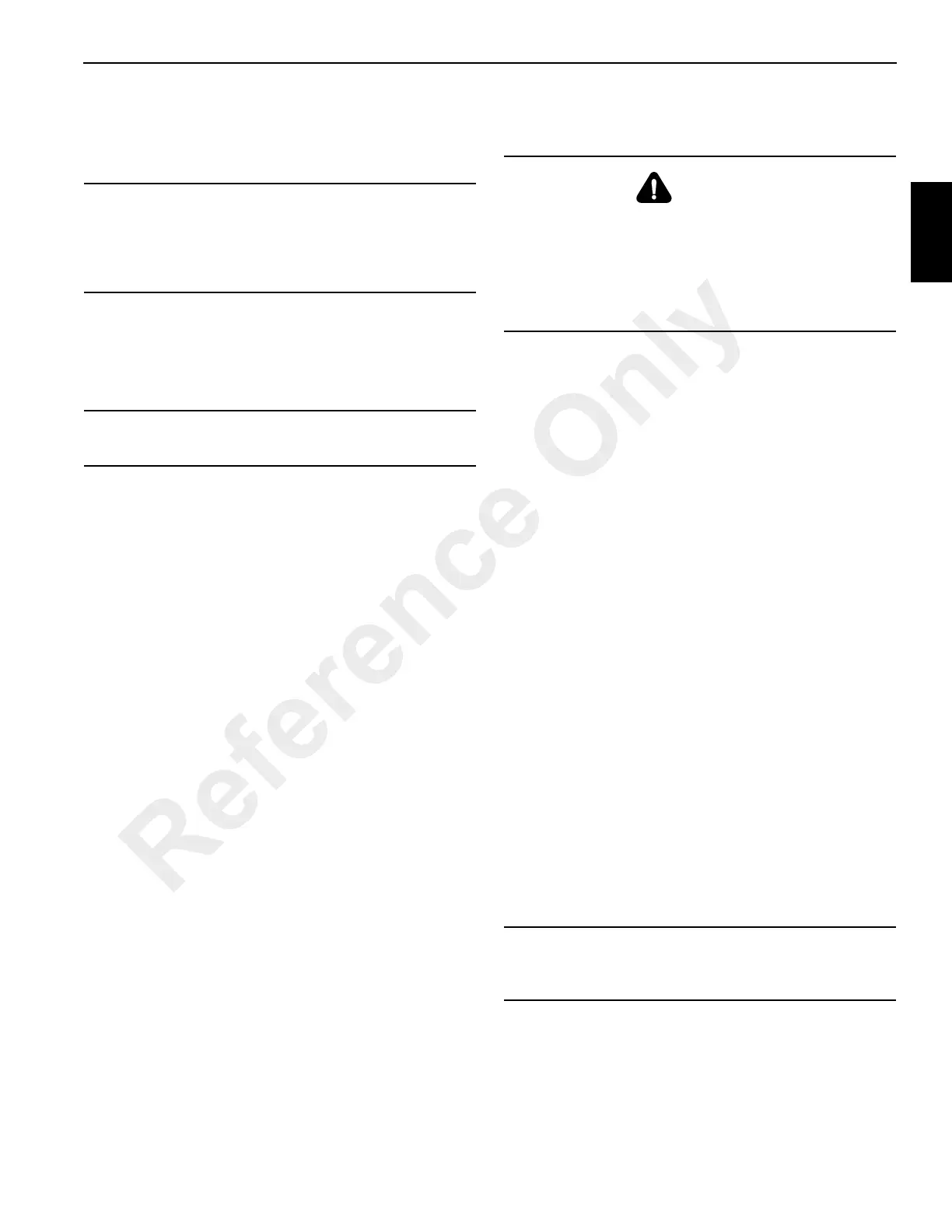